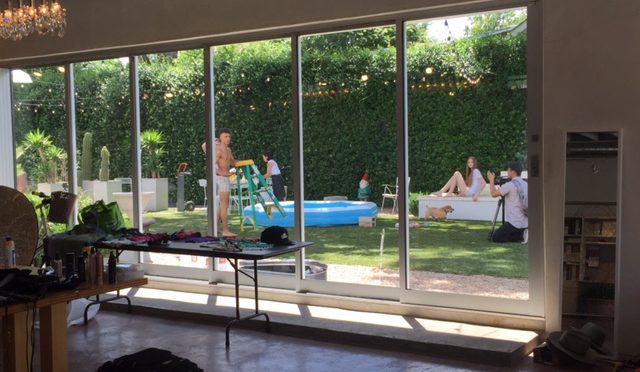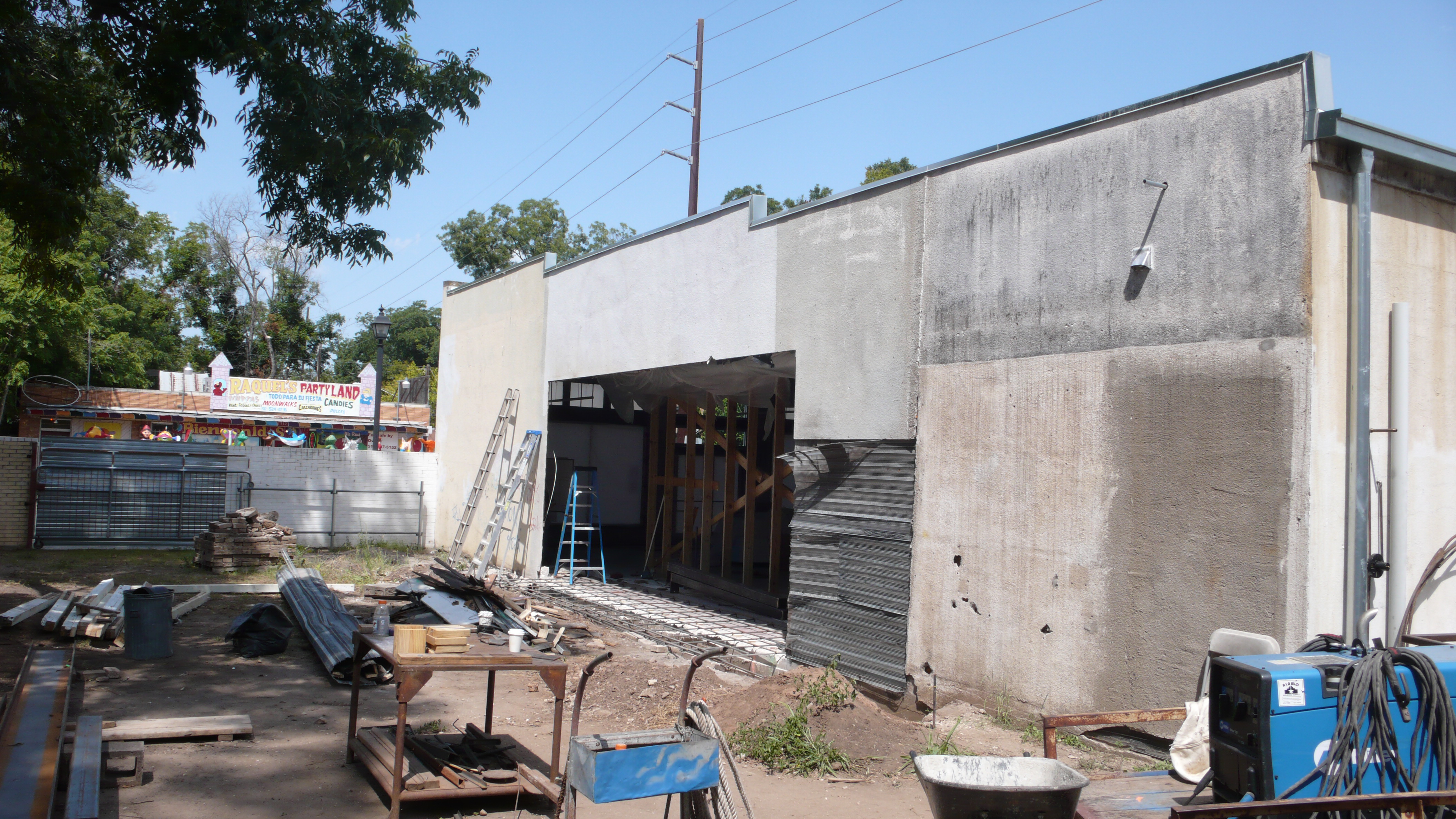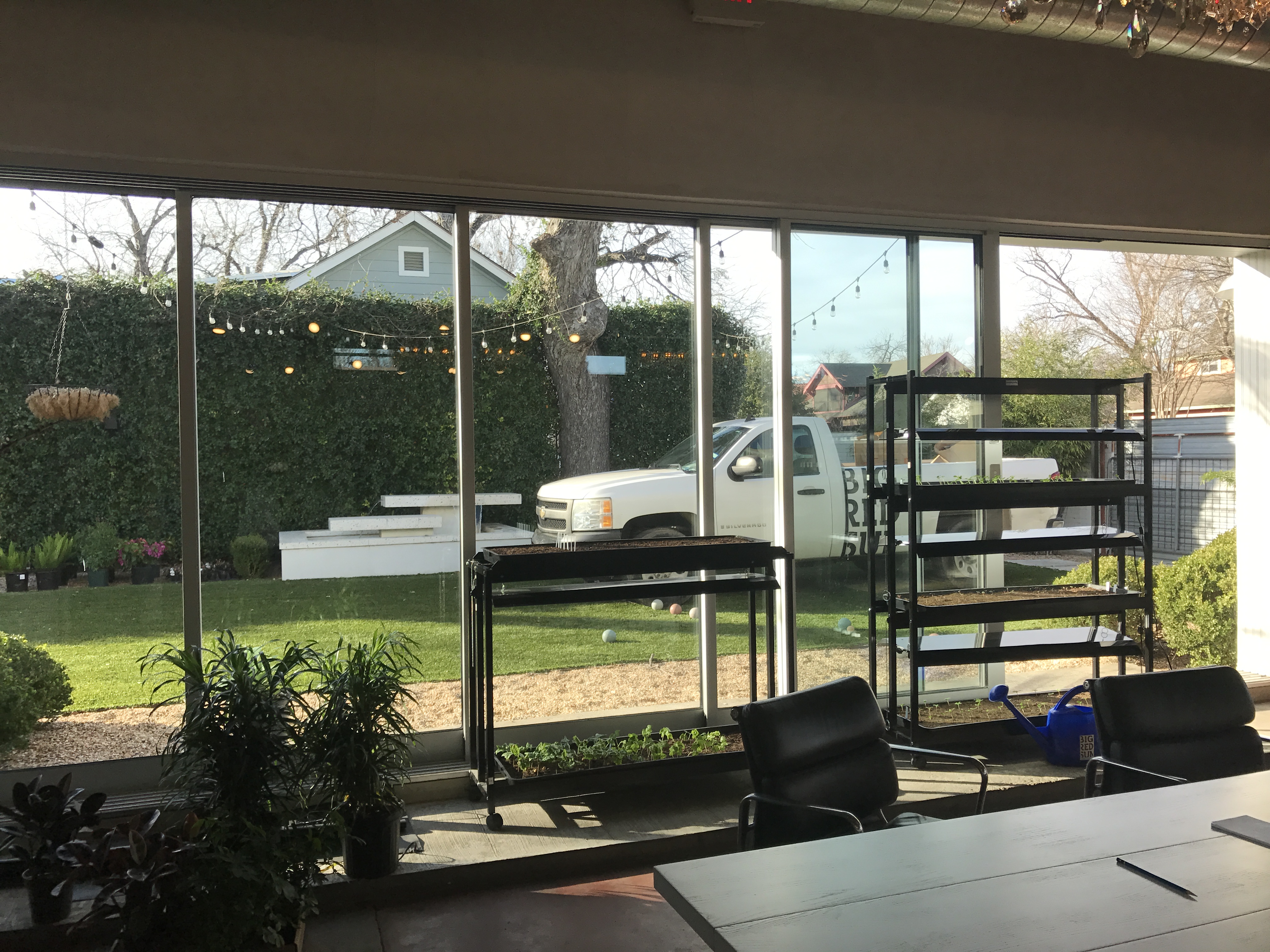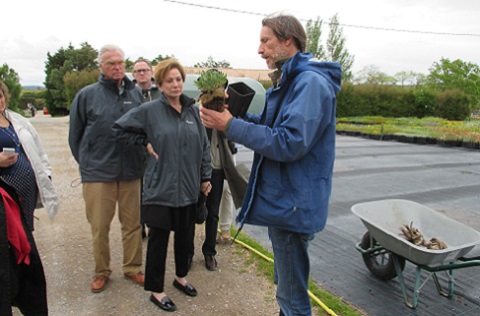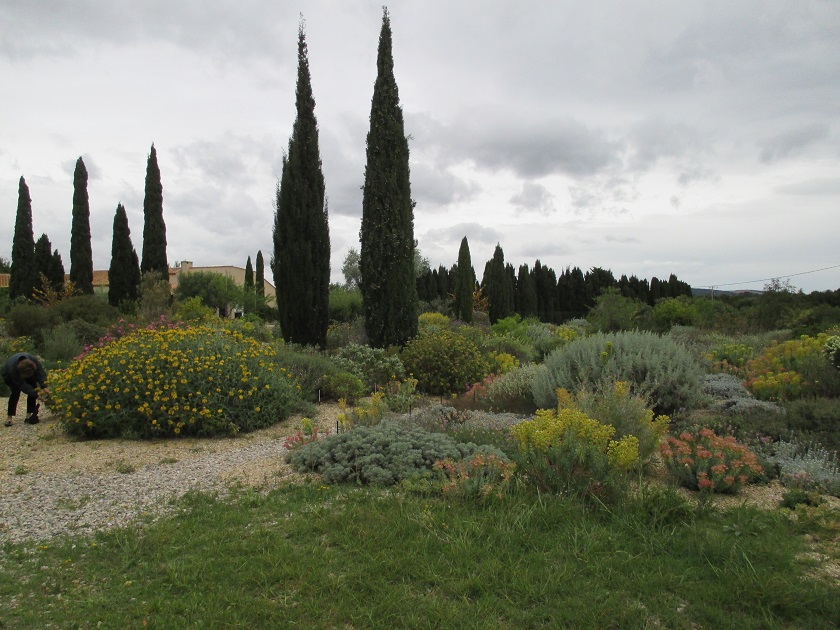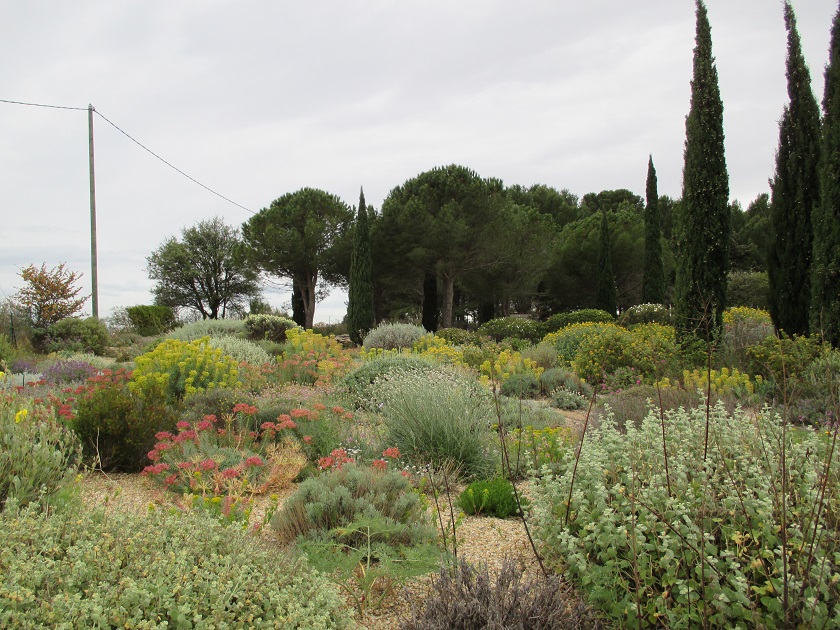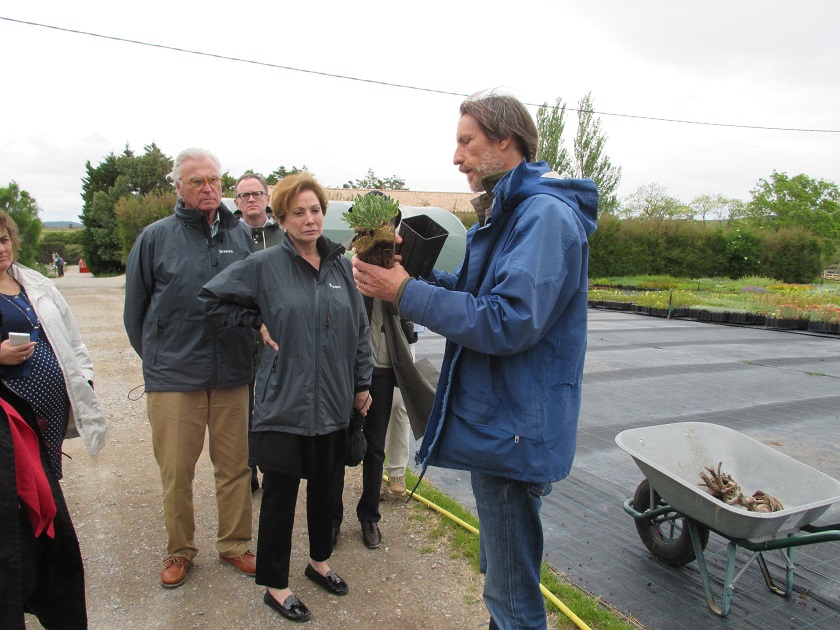Where has everybody been? Here at Big Red Sun, we’ve been working towards our PhD in City of Austin building codes. It’s scintillating. But somehow, I made time to make a last “pre-baby” run to Provence to mainline some contemporary garden design. We signed up for an uppity garden tour led by Mediterranean garden scholar and author Louisa Jones. Poor John Spong had no idea what he was in for.
There is oodles to tell- but i think the main take-away is clip your Mediterranean plants to show them your love. Nicole de Vesian, the mother of this style of provencal gardening, began dispersing it via her acolytes- most notably Marc Nucera. Every time I had encountered Nucera’s name, he was always described as a sculptor but/and he is also always described as the guy who clipped trees in these amazing shapes. Beautiful yes. Art? Sculptor? maybe not.
Mas Benoit, Nucera’s work with Idoux

Nucera’s work at Vesian’s La Louve But then we visited a not very well known garden, “Mas Benoit” by another Vesian acolyte Alain David Idoux. On the bus (yep, a bus?!) Louisa explained that Idoux was interested in geometry, the property owners collected contemporary art and greatly admired the artist Richard Long and ” american land artists”. Honestly- this sounded like the path to garden underwhelment or embarrassment- whichever is worse. But oh how wrong. How very very wrong. I have to admit- it was the first time I could conceive of a garden as a successful sculptural installation. The garden was really intense- I think because the intent of the designer was so clear. He was speaking clearly but in a most spare way, working in a truly minimalist vernacular, speaking in a quiet but huge way. I have never experienced anything like it- and clearly I really don’t have a good way to explain as evidenced by the sentence above OR anyway to show it from the pictures- which may actually be the key to it’s success? This man was not designing for a magazine photo- you need to be in this installation. The most I can muster about it’s success may be that it’s elements of construction are all extremely of the earth. There is no false note here. One of the first things you experience walking up to the farm house is this ante space. It features 2 trees in the yard and this broken vista through the clipped oaks to the back mountains. A bit later, one comes across a lavender planting- a wedge shape that acts as a kinetic sculpture as you walk along it’s length. The views open in relation to the sculpted tree in the field. The field relates to the agrarian nature of the region. This is all neat, but I didn’t really “see” it yet.


Up by the farm house, the planting design is luscious but quite spare even severe. (although later in the year i do believe they let the sage and lavender bloom so…voila)
A lawn lays in front of the house, the perimeters all touched by the clippers. Each tree sculpted over the years.
There is no path to lead you- but you know where you want to go- towards a subtle opening to the grass garden, an allée of olives- and towards the mountains.
The contrast of the grasses – which are to show in late summer are lovely with the clipped. As you enter the allée –it all falls into place. Everything you have seen before and what you will see after as you explore the garden. A large clearing is revealed and with in — sculpture trees. There, I said it. Yes, the trees were sculpture. they took my breath away. they are nothing. but… it made my heart ache.
And to the right another clearing and after, a meadow. And with in the clearing- the aforementioned homage to Mr. Long. And what do you know- did it rise above Richard Long or Robert Smithson? I’m not sure- but “i know it when i see it”, and this is art.
The rest of the garden humbly meanders along. There is no path to guide you. See a meadow and a crude bench from which one overlooks the meadow to the spiral.
Some rocks are lined up against the wild part of the garden to delineate. But now everywhere you looked- you saw the components of the garden differently. It’s hard to explain- but the trees, the clippings, the stones placed- all had a character. Not character. A character. They were individuals now. It was an odd awakening.
Walk along these rocks at the perimeter of the garden- come to the end and encounter a twisted olive- not to mention a massive oak that has been trimmed to guard the pool. (These Provençals think of pools as a necessary evil and tuck them away like a mistress perhaps?)
The owners keep the garden as Mr. Idoux intended- (He died prematurely and Mr. Nucera continues the garden) A full time gardener and his family live on the property and the owners visit often. The group appreciated the garden but didn’t love it. They thought it lacked soul, maybe wasn’t a “garden”. And perhaps they are right. There are no concessions to conventional needs (except that pool) but there are shady nooks, lawns, vistas, heart calming vistas in amongst the art- the garden makes you be in the land. not on the land. I have an urge to sum it up here- but I think that’s precisely not the point. more soon! xojb





